Research Article Open Access
Bioremediation of Polluted Soil Obtained from Tarai Bhavan Region of Uttrakhand, India
| Rajdeo Kumar1, Ashish Chauhan2*, Nisha Yadav1, Laxmi Rawat1 and Manish Kumar Goyal2 | |
| 1Forest Ecology and Environment Division, Forest Research Institute, Dehradun, India | |
| 2National Institute of Pharmaceutical Education and Research, Mohali, India | |
| Corresponding Author : | Ashish Chauhan National Institute of Pharmaceutical Education and Research Mohali, India Tel: +919464616773 E-mail: aashishchauhan26@gmail.com |
| Received December 08, 2014; Accepted January 28, 2015; Published January 30, 2015 | |
| Citation: Kumar R, Chauhan A, Yadav N, Rawat L, Goyal MK (2015) Bioremediation of Polluted Soil obtained from Tarai Bhavan Region of Uttrakhand, India. J Bioremed Biodeg 6:276. doi:10.4172/2155-6199.1000276 | |
| Copyright: © 2015 Kumar R, et al. This is an open-a ccess article distributed under the terms of the Creative Commons Attribution License, which permits unrestricted use, distribution, and reproduction in any medium, provided the original author and source are credited. | |
Related article at Pubmed Pubmed  Scholar Google Scholar Google |
|
Visit for more related articles at Journal of Bioremediation & Biodegradation
Abstract
The rapid industrialization in Tarai Bhavan region of Udham Singh Nagar, Uttarakhand has exposed the soil and water industrial effluent rich in pesticides like chlorophenols that are adversely affecting the ecosystem and disturbing the food chain. Soil is the basic requirement to sustain life on this earth for the living being including human beings, animals, planet or microorganisms (like bacteria and fungi). Bioremediation to remove pollutants is economic than the equivalent physico-chemical methods. It offers the potential to treat contaminated soil and ground water at the site without excavation. It requires lesser input and preserves the frame. The most attractive feature of bioremediation is the reduced impact on the ecosystems. In this study, both the microorganisms of bacteria and fungi P. fluorescence and P. chrysosporium were inoculated in fresh minimal salt medium containing 0, 10, 50, 100, 200 and 500 ppm of pentachlorophenol (PCP) concentrations in separate flask for few hours (4, 8, 16 and 32) and their potentiality to degrade PCP was assessed and found to be fruitful.
| Keywords |
| Industrialization; Pesticide; Bioremediation; Pentachlorophenol |
| Introduction |
| Industrialization plays a vital role in nation’s socio-economic development as well as its political stature. Industries vary according to process technology, sizes, nature of products, characteristics and complexity of wastes discharged. Ideally citing of industries should strike a balance between socio- economic and environmental considerations. Although industrialization is inevitable, various devastating ecological and human disasters have continuously occurred over the last four decades that made industries responsible for various environmental pollutions. It has been widely reported that industrial effluent has a hazardous effect on the quality of flowing water. Industrial discharge contains toxic and hazardous substances, most of which affects human health. These include heavy metals such as lead, cadmium and mercury and toxic organic chemicals such as pesticides, PCBs, dioxins, poly aromatic hydrocarbons (PAHs), petrochemical and phenolic compound [1-5]. |
| Bioremediation is the use of living organisms primarily microorganisms to degrade the environmental contaminants into nontoxic forms. The mechanism of microbial degradation is based on the general principles of physiology and ecology. Biological removal of chemo-pollutants becomes the method of choice since microorganisms can use a variety of xenobiotic compounds including pesticides for their growth, mineralize and detoxify Common soil bacteria and fungi can degrade the majority of the compounds. The most important soil factors that influence bio-degradation are temperature, moisture, presence or absence of oxygen, organic matter and clay content. Microorganisms possess the capable of degrading a large proportion of chemicals. Consequently many of the man-made pesticides introduced into the environment are microbial degraded, mostly by enzymes evolved in response to the presence of natural substrate [6-8]. |
| In order to enhance the microbial degradation of organic pollutants for remediation of contaminated soils, it is essential to understand the enhancing mechanism, especially the relation between the degradation of chemicals in soil and the behavior of degrading microorganisms. There are two types of microbial degradation of pesticides in soil. In the first, repeated application of a pesticide to soil enhance the degradation by enrichment of the pesticide-degrading microorganisms. The enriched microorganisms often metabolize the pesticide as carbon and energy source, which is designated as catabolism. In the second type of degradation, the population of degrading microorganisms in soil does not change even when a pesticide is repeatedly applied and no enhancement of degradation occurs. The microorganisms require other carbon sources to degrade the pesticide that are called as incidental metabolism or co-metabolism. Usually, as microorganisms carry out degradation, they obtain carbon and energy required for growth. An increase in the size of the pesticides degrading population leads to the faster rates of degradation. Microbial degradation of pesticides occurs ecologically through various dynamic and complex forces to support aerobic reactions simultaneously leading to more extensive degradation of many complex pesticides. The enhanced degradation occurs due to the repeated application of pesticides. This is favorable for environmental decontamination of toxic residues. The microbial degradation is the best means of detoxification of pesticides [9-20]. |
| Pentachlorophenol is a polyhalogenated aromatic hydrocarbon of chlorophenol family. Chlorophenols are phenols carrying one chlorine atom attached to the benzene ring. The chemical formula for PCP is C6HCl5O and it has no isomer. Pentachlorophenol has been used extensively as a wood preservative, fungicide, bactericide, herbicide, moluscicide, algaecide, and insecticide. Although numerous reports have shown that PCP undergoes biodegradation but its biodegradation in the environment is often slow. This coupled with its extensive use, has led to the contamination of many terrestrial and aquatic ecosystems world-wide. |
| Materials and Methods |
| All the chemicals used during the course of this investigation were of A.R. grade and were supplied by E. Merck (India), Himedia (India), S.D. Fine chemicals (India), Qualigens (India) or Sigma (U.S.A). All glassware used of corning and borosil made.q |
| Microorganisms |
| Pseudomonas fluorescence: Pure culture of Pseudomonas fluorescence was obtained from gene pool (G. B. Pant University of Agriculture and Technology, Department of Microbiology, Pantnagar). |
| Phanerochete chrysosporium: Pure culture of Phanerochete chrysosporium was obtained from Institute of Microbial Technology (CSIR Laboratory), Chandigarh. |
| Methods |
| Nutrient agar medium: This medium was used to culture bacterial community of individual strain (Tables 1 and 2). |
| Bacterial enrichment: Continuous enrichment of bacterial strains was facilitated by minimal salt medium (Table 3). |
| Fungal enrichment: The fungal community was incubated in Erlenmeyer flask containing a basal minimal medium (Table 4). |
| Trace elements (1 ml) were added and final volume was 1 liter by adding distilled water and the pH was adjusted to 7.0 [21-25]. |
| Morphological characterization of bacteria |
| The selective medium was removed from culture flask under aseptic condition and growth of bacterial community was determined by measuring optical density OD at 600 nm. The culture medium was diluted serially in ten folds and 0.1 ml of diluents was spread on nutrient agar plates. The plates were incubated at 30°C. Colony forming units (CFU) were determined after 24 hours. The bacterial cells that has maximum CFU were characterized based upon morphology of colonies, diameter, colour, opacity, form elevation, margin, smoothness, texture and spreading nature. Isolates were stored on nutrient agar slant as well as in 25% glycerol at 20°C [26-28]. |
| Microscopic study of bacterial culture |
| Indirect staining: A loopful of liquid culture of each isolate was spread on separate clean grease free microscopic slides. A drop of nigrosine was added with culture on slide and made it into thin smear with the help of another slide. Slides were air dried for 40 seconds and examined under microscope and cells were characterized depending upon shape, size and arrangement [20-28]. |
| Gram’s staining: The gram’s staining was performed by modified method of Hucker. For this propose a loopful of culture was taken on slide, smeared and heat fixed. The slides were stained with crystal violet for 30 seconds, washed with water and then few drops of gram’s iodine were applied for 30 seconds. The slides were rinsed and decolorized with 95% alcohol and again rinsed with water. The slides were counter stained with safranin for 20 to 30 seconds. Finally; the sides were rinsed with water blot, dried and then examined under compound microscope with oil immersion lens [15-28]. |
| Identification of fungi |
| Fungal strain that has maximum growth in basal mineral medium containing PCP, was taken and identified by visual observation of colony growth on potato dextrose agar plate and then by microscopic examination. The fungal hyphae was picked up from newly growing fungal colony on agar plate, with the help of alcohol sterilized needle and stained with cotton blue. The slide of fungal hyphae was prepared and placed on the stage of microscope. The slide was first examined under low power (10X) and then switched to high power oil immersion objective. The characteristics examined were noted and then consulted with standard reference literature. |
| Procedure of pentachlorophenol (PCP) degradation |
| Degradation of PCP was studied in laboratory and field conditions in three experiments. |
| Batch Experiment: Different concentration of PCP inoculated with microorganisms was analyzed for chloride release and Ring Cleavage at different time periods. |
| Degradation of pentachlorophenol: After enrichment the bacterial and fungal were inoculated in fresh mineral salt medium with PCP (100 ppm) as a sole carbon source for a few days in a gyratory shaker. The samples were taken out at 4, 8, 16, 32, hours and growth of microbes was measured. |
| Estimation of chloride ions release (Argentometric method) |
| 24 ml of sample was taken in a beaker and added 5 drops of potassium chromate, an indicator solution. With the help of burette, AgNO3 (0.0141 N) solution was added to the beaker. A red color formed, which disappeared soon. At a point where all the chloride ions were precipitated, a stable red color appeared referring to an end point of the reaction. Calculation of amount of chloride ions in the sample was done. |
| C1V1 (AgNO3)=C2V2 (Sample) |
| With the help of this formula C2 concentration was calculated. Amount of chloride ions present in the sample was calculated by multiplying with 35.5 (atomic weight of chloride) with C2 [29-35]. |
| Estimation of ring cleavage |
| 4 ml of cell suspension was dissolved in 0.02 M Tris buffer (0.1) and EDTA (0.1 ml) for lyses of bacterial and fungal cells. The pH was adjusted to 7.8. The mixture was treated with little toluene and 0.1 M catechol (4.0 ml). The development of color was noticed. Yellow color did not appear that suggested absence of meta cleavage. Mixture was shaken for 1 hour at 170 rpm and tested for formation of ß-ketoadipic acid (Roth era Reaction) that indicates the presence of ortho fission. In this procedure, 10 ml culture fluid was acidified with 2 ml HCl followed by addition of 1 ml NaNOP3 (1%). After 2 minute, concentrated ammonia (15 ml) and 10% ferrous sulfate solution (10%) were added. The development of reddish brown color indicated typical Roth era reaction and the presence of ortho cleavage [29-35]. |
| Soil sample |
| Soil sample were collected from the College of Basic Science and Humanities ground. Soil was uniformly grinded and screened for any apparent impurities. The collected soil was processed for determining its physico-chemical characteristics such as texture, moisture, organic carbon employing the following methods: |
| Texture: Particle size analysis of soil used in the experiment was done following the international pipette method using H2O2 (30%) for the removal of organic matter and sodium hexa meta phosphate as dispersing agent. Soluble salt and calcium carbonate were removed by following Jacksons Method. |
| Moisture: Moisture content of soil was determined by oven dry and weight loss method. |
| Potency of Hydrogen (pH): Soil pH was determined in soil extract prepared in a clean 50 ml glass beaker by suspending 20 g soil in 20 ml distilled water and filtered the same through whatman (no.1) filter paper. The filtrate was subjected to measure pH using a pH meter. The standard pH buffer (pH7.0 and pH 4.0) were used to calibrate the pH meter. |
| Organic carbon: Organic carbon of the soil was determined by wet digestion method of Walkey and Black. |
| Estimation of organic carbon: 1.0 g of soil sample was mixed with 10 ml of 1 N K2Cr2O7 in a 500 ml conical flask. 20 ml of concentrated H2SO4 was gently added to it. The solution was shaken well for a minute or two and allowed to stand for about 30 minutes for complete digestion. The content was further diluted by addition of 200 ml of 0.2 g sodium fluoride. They were then added to the conical flask and titrated against standard ferrous ammonium sulphate solution (0.5 N) after addition of 1 ml Diphenyl amine indicator solution. The end point was detected as the violet color changed to purple and finally to brilliant green. |
| Calculation |
| % carbon in soil=(x-y) × 0.003/0.76 × w |
| Where, w=gram weight of soil taken, X=volume in ml of 0.5 N ferrous ammonium sulphate required for reducing 10 ml K2Cr2O7 (blank reading), Y=Volume in ml of 0.5 N ferrous ammonium sulphate required for reducing the excess of dichromate (experimental reading) and 0.003=meq weight of carbon [20-35]. |
| Results and Discussion |
| In the present study an attempt has been made to assess the potential of these two microorganisms i.e. Phanerochaete chrysosporium (fungi) and Pseudomonas fluorescence (bacteria) for the degradation of PCP in soil microcosms in order to suggest their degradation efficiency under natural conditions. |
| Degradation of pentachlorophenol by bacteria and fungi in liquid batch culture |
| Both the micro-organisms were separately inoculated in fresh minimal salt medium containing 0, 10, 50, 100, 200 and 500 ppm PCP concentrations in separate flask for few hours (4, 8, 16, and 32) and their potentiality to degrade PCP was assessed. The growth of bacteria and fungi and degradation of PCP were measured. |
| Growth of bacteria |
| Bacterial growth was measured by taking absorbance at 560 nm of culture broth. The OD values showed an increasing growth pattern in bacteria with time that indicated that bacteria degraded PCP as a carbon source. Bacterial growth was maximum in 100 ppm concentration for all the treatments that may be due to significant degradation of PCP as sole carbon source. However, bacterial growth decreased at higher PCP concentrations. |
| Growth of fungi |
| The growth was measured by spore count method. Spores were counted using the equation: |
| Spores/ml=(n) x 104 |
| Where, n=the average cell count per square of the four corner squares counted. Fungal growth was maximum in 200 ppm concentration that may be due to significant degradation of PCP. However, the growth decreased at higher PCP concentrations (Table 5 and Figure 1). |
| Chloride ion released |
| The chloride ions released (mg/l) at different time interval were measured by Argentomatric method. The data signified that chloride release by the bacteria was maximum at 100 ppm of after 32 hr (i.e.; 52 mg/l) whereas, for fungus it was maximum at 200 ppm of PCP after 16 hr (i.e.; 62.5 mg/l) and declined later. The chloride release directly indicates dehalogenation of PCP. With due course of growth, results revealed that fungi had more potentiality to dehalogentae and degrade pentachlorophenol as compared to bacteria. The dehalogenation of PCP decreased its toxicity (Tables 6, 7, Figures 2 and 3). |
| Ring cleavage by both microorganisms (bacteria and fungi) |
| Mode of ring fission of pentachlorophenol by both the organisms was assessed by observing meta and ortho ring cleavage. No yellow color appeared after mixing catechol in cell suspension, that indicated the absence of meta cleavage in both the organisms. However, positive Rothera test (as violet color was appeared due to β ketoadipic acid formation) for both the organisms showed that ring cleavage occurred at ortho position and confirmed dechlorination of PCP. Flask inoculated with bacteria showed lower efficiency of ring cleavage than fungi (Table 8). |
| Microbial growth of soil microcosm |
| Soil microcosms were fabricated in plastic containers to evaluate potency of PCP degradation under natural soil conditions. |
| pH of soil |
| The pH of the soil was 7.8 which were suitable for the maximum degradation of PCP in soil. The pH gets decreased during experiment, which is primarily due to the release of chloride ion from PCP degradation. |
| Percent of organic carbon (%C) |
| The percentage of organic carbon in soil was 0.23%, which indicated the soil was poor in content of organic carbon. |
| Percent water holding capacity (%WHC) |
| The percentage of water holding capacity in soil was 63.7% which was quiet higher. The desirable moisture content was maintained by adding minimal salt media. The fungi and bacteria cultures were grown on nutrient broth for 24 hrs and were inoculated in both set of soil microcosm containing 30% moisture and 60% moisture. Both the sets had different concentrations of PCP (0, 10, 50, 100, 200 and 500 ppm). |
| Growth of bacteria and fungi |
| Growth of bacteria and fungi was determined by total viable count. In case of 30% moisture, bacterial growth was highest at 100 ppm PCP. Fungal growth was highest at 200 ppm PCP. In case of bacteria at 500 ppm and 200 ppm concentration of PCP, growth decreased and in case of fungi at 500 ppm concentration of PCP, growth decreased indicating that high concentration of PCP had an inhibitory effect on bacteria and fungi. For control (0 ppm concentration) there was no significant increase in cell number due to lack of carbon content (Tables 9, 10, Figures 4 and 5). |
| In case of 60% moisture content growth of both the microorganisms was higher than 30% moisture content. PCP at 500 and 200 ppm concentration was also degraded by bacteria and fungi. Maximum bacterial growth was observed at 100 ppm PCP. Similarly maximum fungal growth was observed at 200 ppm of PCP (Figures 6 and 7). Both the organisms showed better growth at 60% moisture. Interphase between soil and water at soil surface was more prominent at 60% moisture as compared to 30% moisture resembling its native habitat (Tables 11 and 12). |
| The results of ring cleavage and chloride release in liquid batch culture concluded that both microorganisms were capable of utilizing PCP, which is a recalcitrant molecule capable of being degraded only by limited number of bacteria and fungi. The usual approach for isolation of xenobiotic compounds degrading bacteria and fungi is direct planting of active cultures on mineral salt medium with the toxicant as the only carbon source. The isolation of chlorophenols degrading bacteria has become a problem because of the toxic nature of the compounds and their recalcitrant nature [20-36]. |
| Conclusion |
| Pentachlorophenol is a wide spectrum biocide with numerous applications in agriculture, industries and public health. It is considered to be an environmental pollutant because of its board toxicity and persistence in soil for long. Biodegradation of PCP is challenging because it unfolds oxidative phosphorylation and alters membrane fluidity for living beings. The result of the present study can be applied in industries that are the major PCP releaser. The contaminated soil and water in which PCP is a major pollutant could be reformed with the help of this proposed culture and optimized conditions. Biodegradation of pentachlorophenol by the proposed technique could be an effective means of bioremediation and eco-friendly transformation of the toxin accumulating in the environment. |
| Acknowledgements |
| Authors are thankful to the Director, FRI, Dehradun for his kind consent to publish this research articles. We also acknowledge the help of Mr. Rajendra Kumar and Manoj Kumar for providing all necessary chemicals, reagents etc. |
References
|
Tables and Figures at a glance
| Table 1 | Table 2 | Table 3 | Table 4 | Table 5 |
| Table 6 | Table 7 | Table 8 | Table 9 | |
| Table 10 | Table 11 | Table 12 |
Figures at a glance
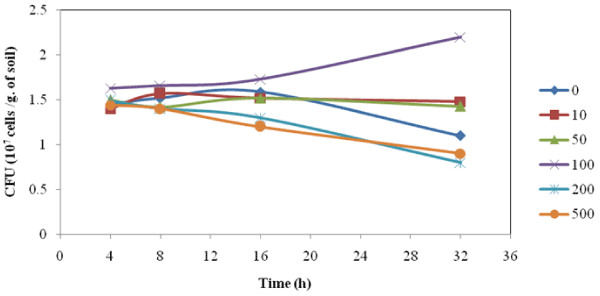 |
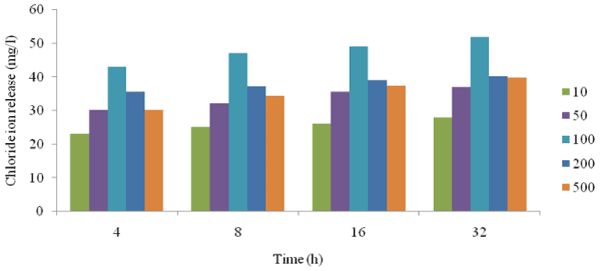 |
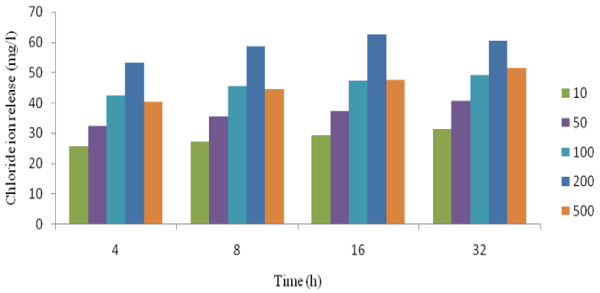 |
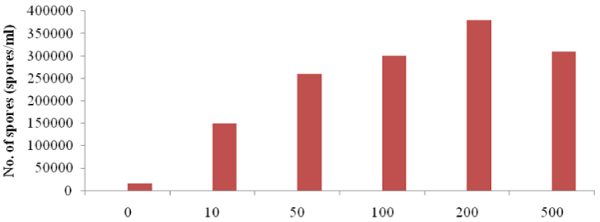 |
| Figure 1 | Figure 2 | Figure 3 | Figure 4 |
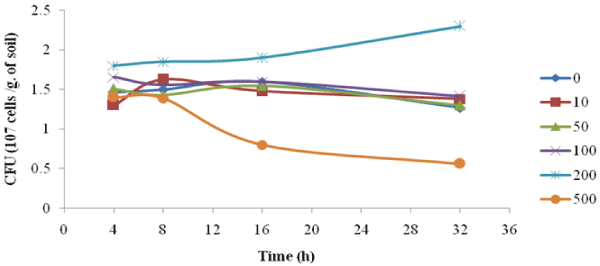 |
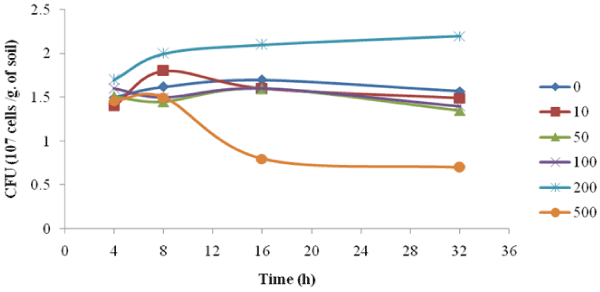 |
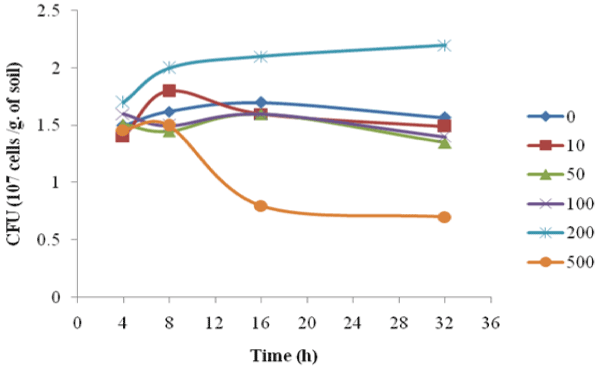 |
| Figure 5 | Figure 6 | Figure 7 |
Relevant Topics
- Anaerobic Biodegradation
- Biodegradable Balloons
- Biodegradable Confetti
- Biodegradable Diapers
- Biodegradable Plastics
- Biodegradable Sunscreen
- Biodegradation
- Bioremediation Bacteria
- Bioremediation Oil Spills
- Bioremediation Plants
- Bioremediation Products
- Ex Situ Bioremediation
- Heavy Metal Bioremediation
- In Situ Bioremediation
- Mycoremediation
- Non Biodegradable
- Phytoremediation
- Sewage Water Treatment
- Soil Bioremediation
- Types of Upwelling
- Waste Degredation
- Xenobiotics
Recommended Journals
Article Tools
Article Usage
- Total views: 19637
- [From(publication date):
March-2015 - Nov 21, 2024] - Breakdown by view type
- HTML page views : 14915
- PDF downloads : 4722
